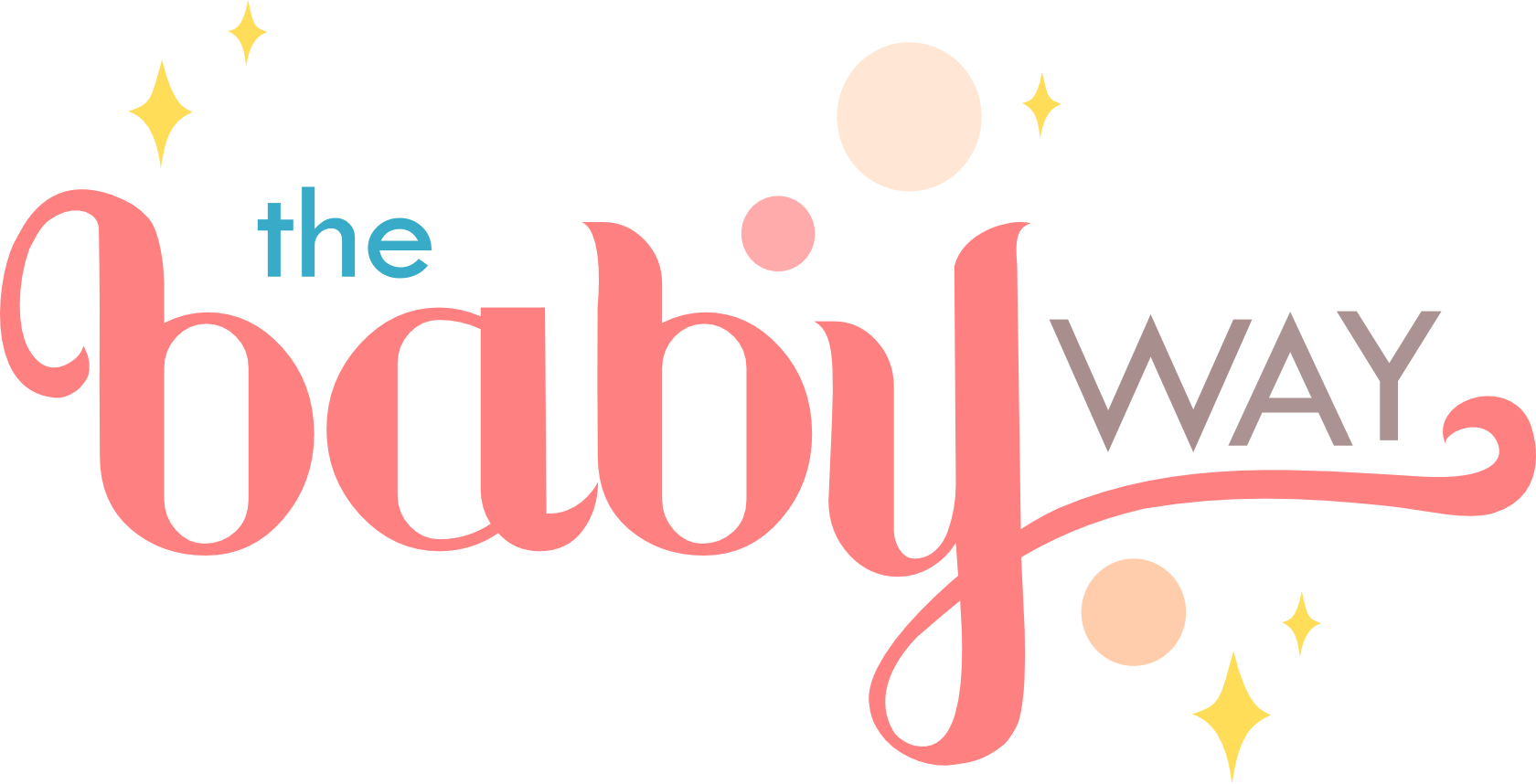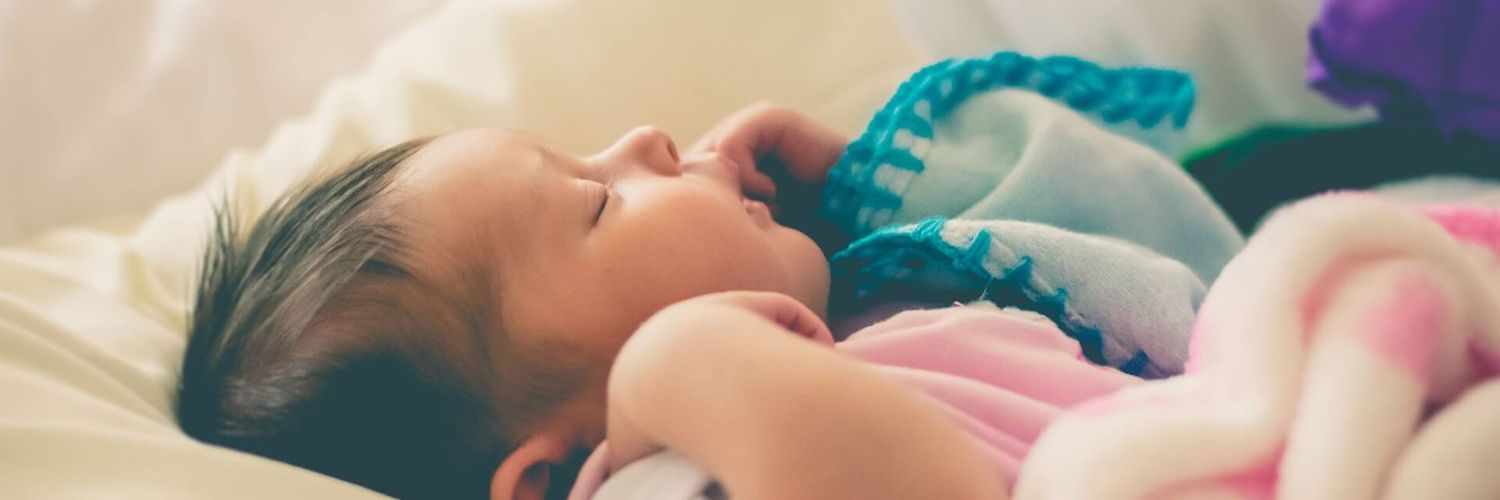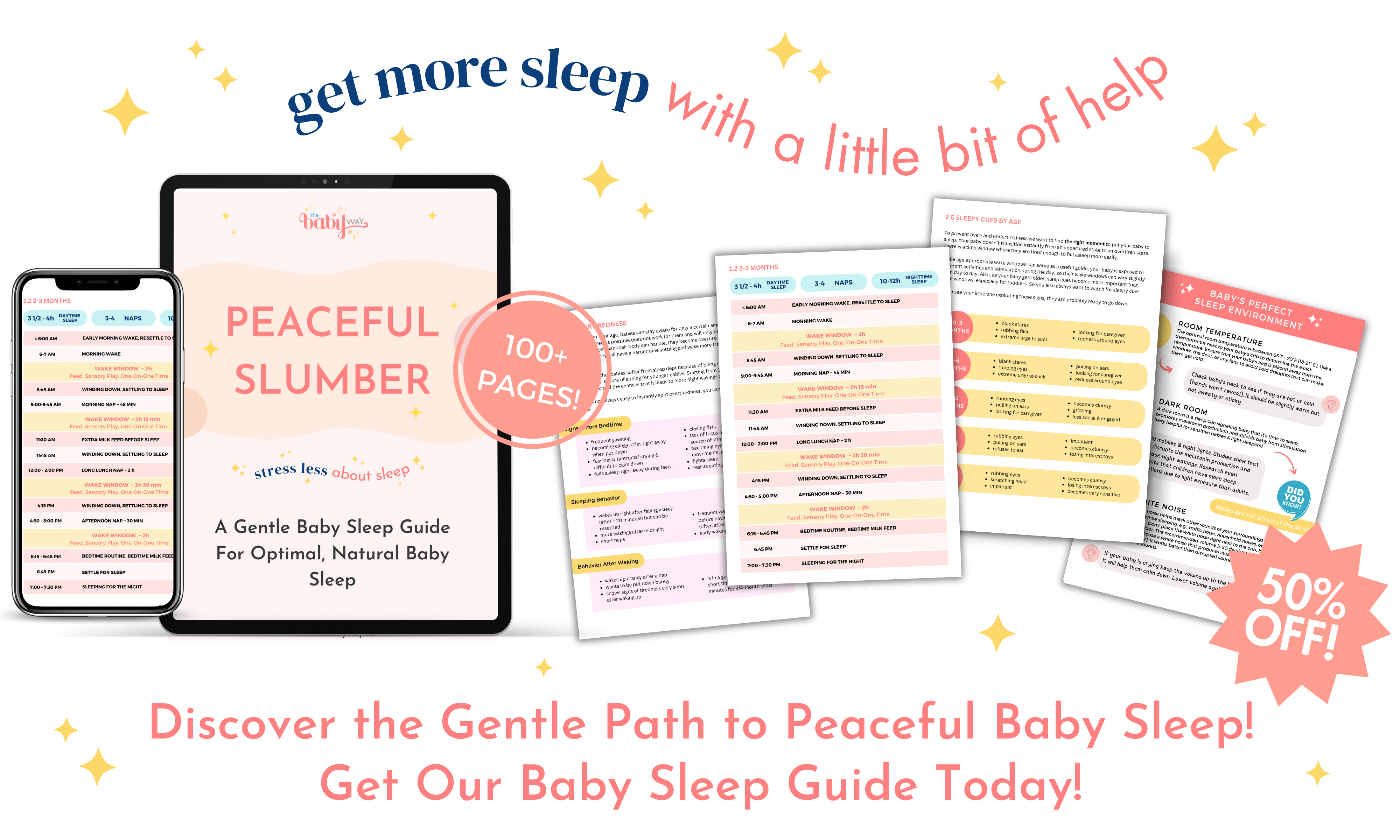Ever wondered when your baby is finally ready to sleep? Well, this can be a tricky one if you are a fresh mom. Learn how to spot your baby's early tired signs so you can get them to sleep just at the right time.
I remember having tons of questions for my babies.
"Why don't you sleep?"
"Why did you wake up so often tonight?"
"Aren't you tired?"
Well, unfortunately, the answers to some of these questions remain a mystery until today because my babies would instead tilt their heads like little puppies than provide me with any helpful answers to work with.
But, there was one thing I could answer: I knew when those babies were ready to sleep. Or better, I learned to recognize tired babies.
How? Well, it's all about understanding your baby's sleep cues!
Here is everything you need to know about baby sleep cues, how they change with age, and how to determine the right time for your baby to sleep.
This article covers:
What Are Baby Sleep Cues And Why Are They Important?
Sleep cues are repetitive behaviors or patterns of your baby that signal that they are ready to sleep. Early sleep cues will tell you that your baby might need a nap soon, while late sleep cues are signs that they are slowly getting too tired.
Sleep cues are important because once you get the hang out of them, you can put your baby down at the right time. And like with so many things in life, especially with baby sleep, timing is key! If you put down your baby too early, they can take a long time to settle to sleep or wake after only one sleep cycle. If you put your baby to bed too late, they might be overtired and crying and, as a result, sleep worse overall.
Putting down your baby at the right time will not only make them fall asleep easier and faster, but they will also sleep better and for a longer period. Now, figuring out this sweet spot may sound tricky, but once you understand sleep cues and how they work, it will be much easier.
Early Sleep Cues
Early sleep cues are your baby's way of communicating that they are getting tired and are soon ready for the next nap.
Typical early sleep cues of a newborn are:
- blank stares
- red eyebrows
- looking away
If you have an older baby or a toddler, they might additionally show the following signs:
- looking for caregiver
- wants to be carried
When you see these tired signs, it's a good idea to start with your nap or bedtime routine to be ready for sleep.
Late Sleep Cues
Late sleep cues signal that your baby is ready to sleep now. They should be ready for bed, meaning fresh diaper and fed, so you can start to settle them to sleep.
Late seep cues of a newborn baby can look like these:
- frequent yawning
- rubbing eyes
- pulling ears
- becomes slightly fussy
- increased sucking, e.g., of fingers
Common baby sleep cues for older babies and toddlers can additionally be:
- doesn't want to eat/ wants to nurse
- becomes impatient, loses interest in toys
- becomes sensitive
- scratches head
As your baby gets more tired, those sleepy cues will progress and intensify. Then it's definitely time to get your tired baby to sleep.
How To Identify Your Baby's Own Sleep Cues
Your baby will not show every sleep cue mentioned above every time. Sometimes children also have their very own sleep cues. I have seen babies rub their faces against their mom's shoulder or toddlers playing with their hair. Over time you will learn which sleepy cues your baby is usually showing.
My baby pulled her ears twice, yawned once, and looked away for exactly 10 seconds. I guess she is ready to nap right now!
Pay close attention to your baby
Observe your baby to determine their individual behavior before they go to sleep. What signs are they showing regularly? How fast do they get from sleepy to overtired? This is really a process of trial and error. It just takes time to figure out each baby's unique sleepy pattern.
Learn about optimal wake windows
Most babies fit into a typical range of how long they can stay awake according to their age. Knowing your baby's age-appropriate wake window will also help you determine the best time to put baby to sleep. Together with your baby's sleep cues, you will better know if your baby is really ready for the next nap or simply has a little dip in energy.
Trial and error
Now it's time to try it out. Couple your baby's sleep cues with their optimal wake window and get your baby to sleep once you think they are ready. This is a process, and you will learn along the way. Observe how long it takes for your baby to fall asleep and how long they are sleeping. After trying a couple of times, you should figure out their most intense sleepy cue, when to start your routine, and when to get them to sleep.
Signs Your Baby Is Already Overtired
Usually, babies don't go from "I am a little bit tired" to an utterly overtired state. Usually...
But come on, we are talking about babies here! So 3,2, 1, and BAM, OVERTIRED BABY VIBES COMING IN!
So, of course, there are exceptions. Sometimes babies get overtired within the blink of an eye. Without knowing what happened, your baby suddenly starts crying during the nap routine or even cries herself to sleep.
Typical signs of an overtired baby are:
- tantrums/ crying
- difficult to calm down/settle
- becoming hyperactive
- becoming very clingy
Don't worry, every parent on this planet had to deal with an overtired baby at least a dozen times. No need to make a big deal out of it. It's something to learn about, too. If you want to find out more about overtired babies and how to get them to sleep, make sure to check out the article below!
What If My Baby Shows Sleep Cues Right After Waking Up?
Newborn sleep is often unpredictable, and with an undeveloped circadian rhythm, wake windows are not a real thing yet. So for young babies under 2 months, you should not focus on any awake window or newborn sleep schedule but get them to sleep whenever your little one shows tired signs.
If you have an older baby, staying up for the right amount of time can help your baby sleep longer stretches. Sometimes we put a baby to sleep too early and as a result, they have cat naps all day.
If your baby is showing sleeping cues not long after waking up, it's worth taking a look at typical wake windows for their age. While your baby doesn't have to be awake for a full wake window, and wake windows will not be the same every single time, they can be a good indicator of whether your baby has a little dip in energy or really needs a nap.
Most parents assume hunger or tiredness when their baby cries or gets fussy. But there are much more possibilities...for example, being bored or wanting more attention.
I swear whenever our babies were getting fussy, my husband would immediately say: "They need to sleep asap! They are tired." But the truth is an unsettled baby can mean a lot of things.
Also, many parents think their baby needs more sleep than they actually do. Who can blame them? Having to sleep 12 hours at night and the fear of an overtired baby makes people rush to the nursery every time their baby touches their ear. But the truth is that babies often have lower sleep needs than advertised. A solid 10-11 hours are more common than a total of 12 hours.
So even if your baby shows tired signs way before they are usually sleeping, it is possible that they are bored or need a change of scenery. Change the environment and engage in play. This can help your baby reenergize.
Of course, if your baby is still showing tired signs after a while, then go ahead and get them to sleep.
Sleepy Cues, Wake Windows, Or Sleep Schedule?
Sometimes parents get confused by all the different types of sleep cues, or which to follow, sleepy cues, wake windows, or even a schedule.
Well, this really depends on your baby's age. If you have a newborn, then there is really no need to track their awake time. Instead, go with the flow and get them to sleep whenever you see any sleepy cues. So at this age, sleepy cues are the way to go!
As your baby gets older, the amount of time they are awake can affect their quality of sleep more and more. After 2 months, you can start looking at wake windows, but sleep cues will still lead the way. After 4 months, babies get more interested in play and their surroundings. Wake windows and a loose schedule can help you now, for example, to ditch short naps and instead have fewer but longer naps.
Once your little one becomes a toddler, daytime sleep will decrease, and you might even need to cap the one last nap of the day. At this age, sleep cues are still helpful but not as reliable as they were during the newborn stage. Your toddler might show tired signs, but you don't need to get them to sleep ASAP like a newborn. Instead, they might still need another 30-40 minutes of quiet play to finally drift off to sleep peacefully.
Sleepy cues are a helpful tool, but they are not the bible. Give yourself and your baby some grace. Have patience to learn about your baby's sleep needs and sleep patterns. With time everything will become more natural for you.


